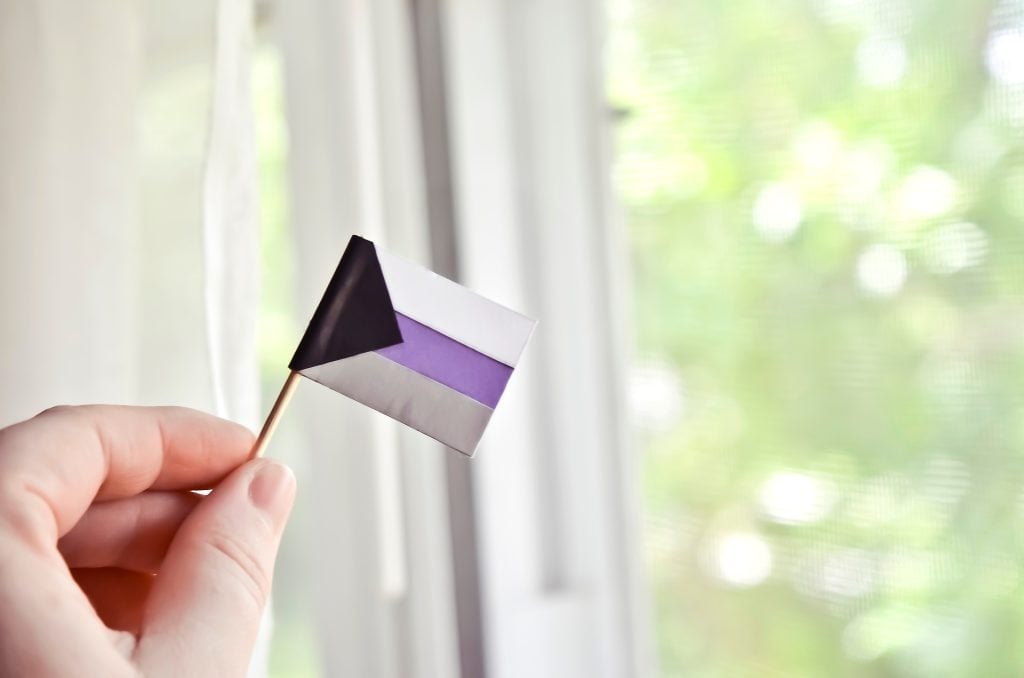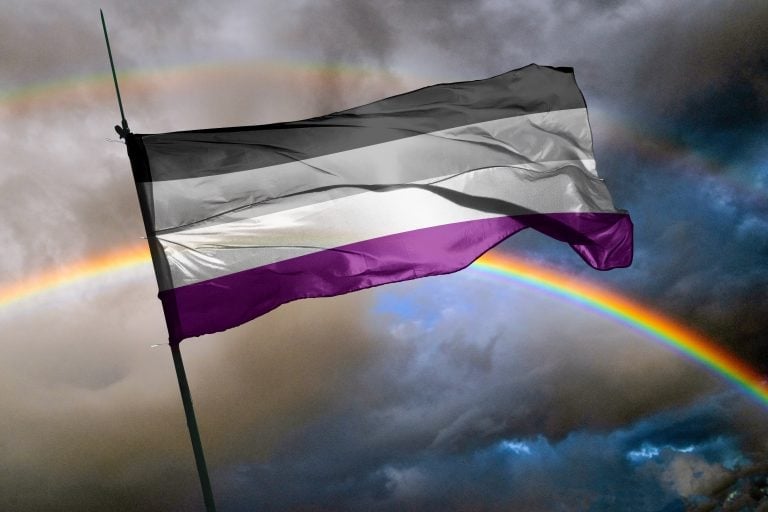There are more and more people who are coming out as grays**ual, so here is what you need to know.
We talked about the TikTok celebrity who came out as trans, the lady who found out she was aro**s**ual after years of not knowing, and the woman who found out she was aro**s**ual after years of not knowing.
In a world where s**uality is typically seen as black and white, many people don’t fit into the heteronormative.

But grays**uality, which can alternatively be spelled “greys**uality,” “gray a,” “gray-A,” “gray-ace,” or “grey-ace,” is a more complex identity that goes against the usual ideas about s**ual orientation.
According to WebMD, grays**uality refers to people who are attracted to others infrequently, weakly, or only in certain situations.
According to the As**ual Visibility & Education Network, grays**ual people “identify with the area between as**uality and s**uality” and may only feel s**ual attraction very rarely, only in certain situations, or at such a low level that it is not necessary for relationships.

Shadeen Francis, LMFT, CST, a licensed marriage and family therapist, tells Men’s Health that people who identify as grays**ual may relate to statements like “I feel like I experience attraction occasionally, but only in certain situations” or “Maybe I like certain kinds of activities, but I’m repulsed by or turned off by others.”
This identification is part of the larger as**ual spectrum. It is a bridge (or “gray area”) between those who rarely or never feel attracted to others and people who do feel attracted to others all the time.
The three main categories of as**uality help us understand how grays**uality fits in.
S-disgusted refers to persons who are repulsed by or utterly uninterested in s**; s-neutral refers to people who are not repulsed but don’t actively seek it out; and s-positive refers to people who identify as s**ual but nevertheless engage in s** for pleasure.

Gray s**ual people may identify with any of these groups while yet feeling s**ual desire from time to time.
Counselor Eric Marlowe Garrison stresses that these labels should offer liberation rather than limitation, asserting that individuals are not obligated to align with every characteristic linked to their selected identity.
There is a big difference between attraction and libido.
S**ual attraction is when you find certain people attractive and desire to be with them.
Experts told Healthline that libido is like “the need to scratch an itch” and is the basic need for pleasure and release.
The idea of “mixed orientation” or “cross orientation” lets grays**ual people identify with different romantic orientations, such biromantic, heteroromantic, homoromantic, or aromantic, based on who they are attracted to romantically.
Grays**ual persons engage in relationships through several modalities, contesting preconceived notions regarding the significance of attraction in romantic connections.
A lot of grays**ual people want and have happy romantic relationships, either with other grays**ual people or with allos**ual partners.

Francis stresses how important it is for partners to talk to each other about how they feel, what they like and don’t like, and what they want to do or not do.
She says to look for partners that are “patient, communicative, curious, and respect boundaries.”
For certain grays**ual people, s** may not be very important in relationships.
Since the phrase was first used, the grays**ual community has expanded a lot. The 2019 Ace Community Census found that gray-a s**uals made up about 10% of all a s**ual spectrum respondents. This makes it the second most common ace identification behind a s**uality itself.
The community has come up with its own symbols and representations. The gray stripe on the as**ual community flag, which was made in 2010, stands for gray-as**uals.
A certain flag for grays**uality has purple for as**uality, white for allos**uality, and gray for the change between these two identities.
People who need help can find it through groups like the As**ual Visibility and Education Network (AVEN), internet forums, local LGBTQA+ community centers, and therapists who are trained in s**uality.
